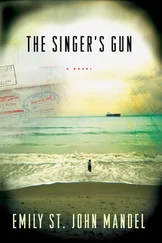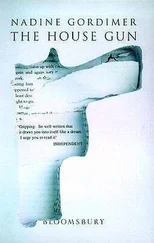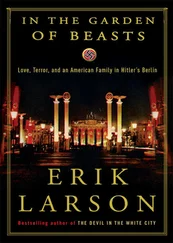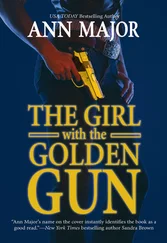No one knows how many people in all incur nonfatal gunshot wounds each year. The most common estimate is that there are five nonfatal wounds for every fatality, or more than 150,000 injuries a year. No one knows for sure, however, because no federal entity keeps track. The Consumer Product Safety Commission, responsible for monitoring injuries from virtually every other consumer product, does not tally gunshot injuries because its founding legislation explicitly excluded firearms from its jurisdiction. One might assume this circumstance came to exist after a pitched battle between the Commission’s backers and the National Rifle Association. The story is less dramatic, but far more disappointing. The sponsors excluded guns because they feared such a battle, and the damage it might do to the rest of the proposed legislation. There was ample reason for this fear, however. The firearms industry and gun lobby have a vested interest in suppressing detailed information on gunshot injuries and accidents, especially when such numbers are linked to specific models of firearms. Accurate statistics would be invaluable to bereaved families seeking to win negligence suits against gun dealers, distributors, and manufacturers. A true tally of nonfatal injuries, moreover, would by itself change the contours of the national debate over guns by providing a more realistic picture of the widespread prevalence of gunshot injury. That Congress should carve an exception for firearms is all the more remarkable given that guns comprise the one class of mass-market product designed from the start to kill.
♦ ♦ ♦
The nation began arming itself in earnest in the roaring sixties amid student protests, Cold War terror, race riots, and assassinations. Over the most tumultuous years, from 1967 to 1968, the number of handguns annually made available for sale to civilians in the U.S. rose by 50 percent—by some 802,000 pistols and revolvers—to 2.4 million, the greatest single annual leap in American history. In 1960, there were 16 million handguns in America; ten years later, the total had risen to more than 27 million. As of 1989, according to a study by the Bureau of Alcohol, Tobacco and Firearms (ATF), there were 66.7 million handguns and 200 million firearms of all kinds in circulation in the United States.
If these guns were controlled by a legion of sober adults, we might have far less to worry about. One study of eleven thousand teenagers in ten states found that 41 percent of the boys and 21 percent of the girls said they could obtain a handgun whenever they wished. A July 1993 poll of students in grades six through twelve conducted by Louis Harris for the Harvard School of Public Health found that 59 percent said they could get a handgun if they wanted one; 21 percent said they could get one within the hour.
Handgun access among children is not strictly an urban problem. The Harris poll found the degree of access to be surprisingly constant between rural, suburban, and urban communities. More than 60 percent of children who lived in cities said they could get a handgun if they wished; 58 percent of suburban kids claimed they could too. A University of North Carolina study of adolescents in suburban and rural communities in the Southeast found that 9 percent of the boys actually owned a handgun. Boys typically received their first firearm—usually a shotgun or a rifle but seven percent of the time a handgun—at the age of twelve and a half. More than a fifth, however, received their first guns at the very responsible age of ten.
Kids have begun using their guns against each other. From 1965 to 1990, according to the Federal Bureau of Investigation, the rate at which children age ten through seventeen were arrested for homicide increased by 332 percent, despite a slight drop in that segment of the population. Anyone inclined to dismiss these figures as reflecting merely the high rate of homicide in the nation’s black urban neighborhoods would be profoundly mistaken. The incidence of homicide arrests of white children increased in the same period by 425 percent.
Increasingly, you don’t need to own a gun or be the intended target of someone else’s gun to get shot. As guns have proliferated, the rate at which bystanders are wounded and killed has soared. In 1985 stray bullets killed four New Yorkers; in 1990 they killed forty.
Gun merchants and hobbyists steadfastly protest that guns aren’t the problem and, even if they were, that gun ownership is explicitly endorsed by the Second Amendment of the Constitution—the much misquoted “right to bear arms” clause—and is therefore as much a part of the American way as, say, voting. A comparison of international homicide statistics proves that guns do indeed set America apart from the rest of the developed world.
In 1987, America’s civilian guns were used to murder 3,187 young men age fifteen to twenty-four, accounting for three-fourths of the annual homicide rate in this demographic group of 21.9 per 100,000 people.
In Canada only seventeen young men were murdered with firearms, for an overall rate of 2.9 per 100,000.
In Japan, with 0.5 homicides per 100,000 people, eight young men died in gunshot homicides—as many killings as New York police encounter on a single busy weekend.
What accounts for the difference? Incidence of poverty, surely. Racial division. America’s frontier history and the myths it conjured. The influence of television and movies.
And the sheer number of guns.
It is easy to challenge any study that purports to show a direct relationship between firearms proliferation and the rate of violent crime. Which came first, the challenge goes, the rise in gun sales or the crime rate? Did the increase in the number of guns encourage more people to commit crime? Or did the increase in crime drive more people to buy guns to defend themselves? The ease of making this challenge and the impossibility of ever fully defending against it have allowed the gun camp to obscure the debate over firearms distribution, when in fact there is an abundance of credible evidence that where there are more guns, there are more deaths from guns. The NRA’s sloganeering notwithstanding, the evidence suggests that guns do indeed kill people.
A landmark study in King County, Washington, which includes Seattle, found that a gun kept at home was forty-three times more likely to be used to kill its owner, a family member, or a friend than an intruder. A Pittsburgh psychiatric hospital reported that the mere presence of a gun in the home more than doubles the odds that an adolescent member of the family will commit suicide. In 1987, Dr. Garen Wintemute, a researcher with the University of California at Davis Medical Center, plotted the annual firearm homicide rate per 100,000 people for the years 1946 through 1982. On the same graph, he plotted ATF’s estimates of the number of new firearms made available for sale each year. The two lines track each other over the page with the eerie precision of a pair of figure skaters, both peaking around 1974, both dipping in 1976, both rising to another peak, both falling in concert toward 1982. (The rates of both have increased since then.) A 1986 study from the National Institute of Mental Health found similarly striking correlations between the increased proliferation of firearms and the rate of gunshot suicide among people age ten to twenty-four.
One of the foremost researchers in this forbidding territory is Franklin E. Zimring, a law professor at Earl Warren Legal Institute of the University of California, Berkeley, who has studied the issue since the 1960s. He established that although handguns only account for about a third of the guns owned in America, they are used in more than 75 percent of gunshot homicides and 80 percent of firearm-related robberies. “On average,” Zimring reported, “rifles and shotguns are seven, times less likely than handguns to be used in criminal violence.” In one of his early studies he reviewed records of 16,000 violent assaults in Chicago to see whether the attacker’s choice of knife or gun influenced the outcome. He found, first, that in seven of ten cases where the victim died, the attacker inflicted only one wound. That is, the attacker did not repeatedly stab or shoot the victim to make sure he was dead. The major difference among these attacks was that “an assault with a gun was five times more likely to result in a fatality than an assault with a knife.” Zimring described the heightened danger posed by the attacker’s choice of a gun as an “instrumentality effect” attributable to the inherent lethal character of guns.
Читать дальше








![Ричард Деминг - Whistle Past the Graveyard [= Give the Girl a Gun]](/books/412176/richard-deming-whistle-past-the-graveyard-give-t-thumb.webp)



